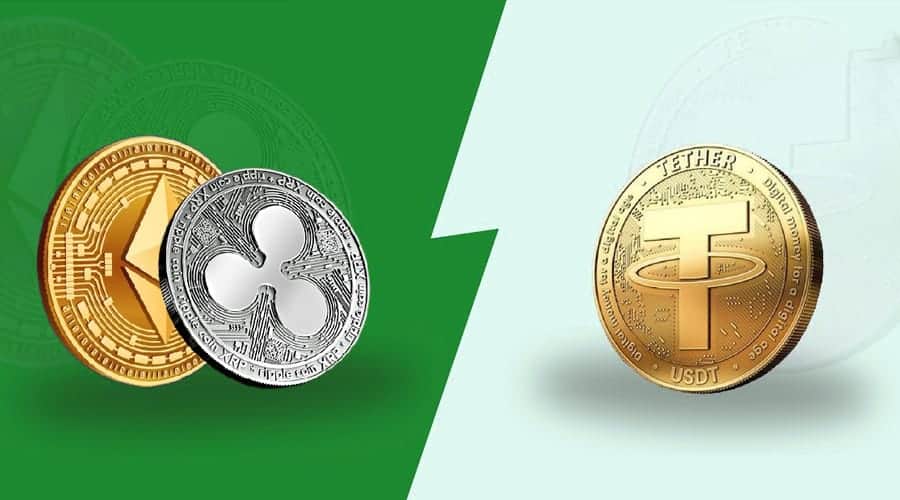Investing in cryptocurrencies might be confusing, to begin with since there are so many technical words to understand. Understanding the differences between Bitcoin, altcoins, and stablecoins is crucial. Each of these forms of cryptocurrency has advantages and disadvantages.
In this article, we compare stablecoins versus altcoins as cryptocurrency investments.
What is an Altcoin?
Any cryptocurrency that is not Bitcoin (BTC) is referred to as an altcoin. Any cryptocurrency that is neither Bitcoin nor Ethereum (ETH) is referred to as an altcoin by some individuals.
The most popular cryptocurrency now is undoubtedly Bitcoin, which was the very first cryptocurrency. BTC typically represents between 45% and 70% of the total market value of the multi-trillion dollar cryptocurrency industry. Bitcoin is the most well-known cryptocurrency in the world in addition to its value and popularity.
Even while it has not gained as much popularity as Bitcoin, Ethereum is nonetheless well-known and controls a sizable portion of the market. Many blockchain and cryptocurrency transactions use the Ethereum network as it may be used to build smart contracts and other tokens.
All other cryptocurrency tokens are now referred to as “altcoins” because Bitcoin dominates the whole crypto industry. On various exchanges, there are thousands of alternative currencies that may be traded. Due to the decentralized and international nature of the sector and the fact that anybody may launch a cryptocurrency, it is hard to determine the precise number of cryptocurrencies. Patterns in the interaction between Bitcoin and altcoins have been noticed by industry observers.
A significant rise in the value of Bitcoin is frequently followed by an upsurge in the value of altcoins.
The fundamental traits of both Bitcoin and altcoins are the same. They are digital currencies that use secure and open ledgers built on the blockchain to keep track of transactions. But each alternative cryptocurrency has unique qualities that can make it an alluring Bitcoin substitute. For instance, some altcoins promise to offer more privacy than Bitcoin or to have quicker transaction times. Others employ various staking or proof schemes.
Read more about Altcoins here.
So, what is a Stablecoin?
A stablecoin is a type of cryptocurrency where each coin’s value is tied to an external asset, such as the U.S. dollar, the euro, or even a commodity or another cryptocurrency. The same can be said with all stablecoins. They were first introduced to the cryptocurrency market in 2015.
How do stablecoins work?
Each coin’s value is tied to a specific item, therefore it will always be the same as the asset’s current market value. For instance, each coin’s price will always be as near to $1 as feasible if a stablecoin is fixed to the U.S. dollar. The coin’s creators, or in certain situations, a government body, can act to maintain a constant price. Typically, this entails starting inflation production and offering a guaranteed repurchase.
For instance, the developers of a stablecoin XYZ that is tied to the USD may keep the USD amount that they have published in token form in an account.
In this way, even if they have to purchase back 100% of the XYZ coins, they can always be sure that they could do it for $1. Although backing ensures a minimum value for XYZ, the coin’s market price may still increase. The designers can lower the price by issuing more XYZ coins in order to maintain the price at $1. Non-collateralized stablecoins or “seigniorage-style” stablecoins are other names for unbacked stablecoins.
Despite the fact that this mechanism appears to work in principle, it costs a lot of money to fully support a stablecoin. There is a chance that stablecoin developers are overstating their holdings.
Stablecoins vs Altcoins
Stablecoins are altcoins, however, not all altcoins are stablecoins. Let us examine some of the parallels and differences between the two.
Similarities
Stablecoins and altcoins are both cryptocurrencies that rely on the blockchain to record and track transactions. They are digital currencies that may be exchanged on exchanges and kept in various types of crypto wallets (hot or cold storage).
Differences
The primary difference between stablecoins and altcoins is that stablecoins always have the same value, but altcoins might fluctuate in value.
Stablecoins are an investment that will always have the same value. Altcoins, on the other hand, provide a variety of functionalities, making them an appealing alternative to Bitcoin.
Examples of Stablecoins and Altcoins
Listed below are examples of stablecoins and altcoins investors can buy.
Examples of altcoins
There are thousands of altcoins available in the market, Some examples include Dogecoin (DOGE), Litecoin (LTC), Monero (XMR), ripple (XRP), Cardano (ADA), Polygon (MATIC).
Security tokens, mining-based altcoins, utility tokens, and stablecoins are examples of altcoins.
Stablecoins: These altcoins are similar to purchasing stock in a firm. They are distributed to customers through an initial coin offering (ICO), which is issued by companies. Security token buyers may get dividends or a portion of the issuing company’s stock. Sia Funds, Blockchain Capital, and Science Blockchain are a few instances of security tokens.
Mining-based altcoins: Users can acquire this form of cryptocurrency through a computer-based process called mining. Bitcoin also employs a mining technique to create new currencies and maintain the network operational. Ethereum and Litecoin are two mining-based cryptocurrencies.
Utility tokens: These tokens have a specialized use case inside an ecosystem, such as a video game or an e-commerce site. They let the owner do particular network operations, such as purchasing a digital product within a video game environment. The coin was established specifically for use in that environment and may be sold in the larger crypto market; however, it has no actual purpose outside of that ecosystem. Basic Attention Token (BAT) and Binance Coin (BNB) are two examples of utility tokens.
Examples of stablecoins
Binance USD (BUSD), Dai (DAI), Digix Gold (DGX), Paxos Standard (PAX), and TrueUSD (TUSD) are some popular stablecoins.


